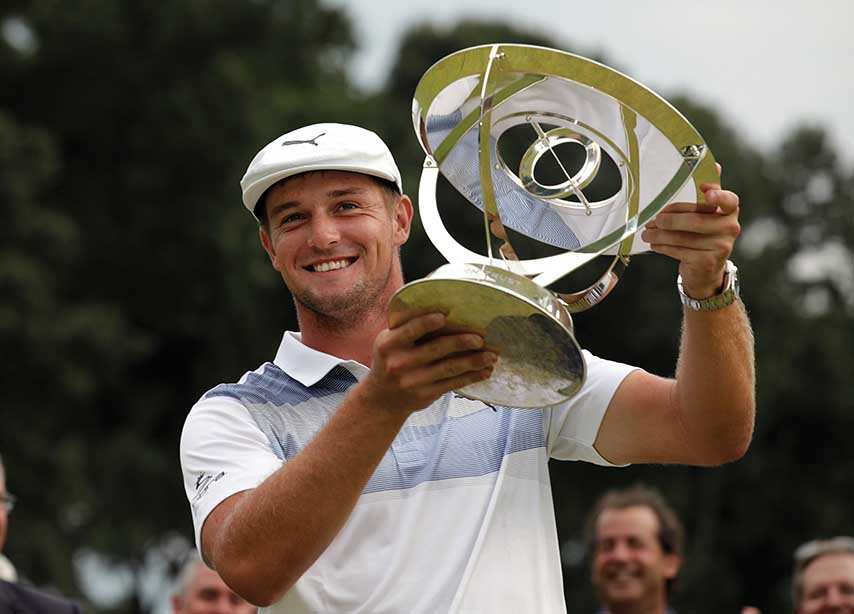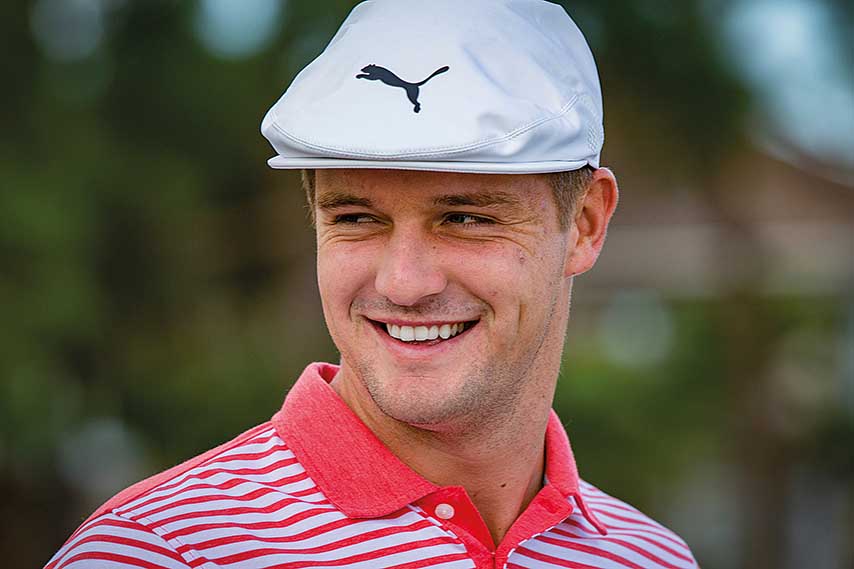There are some players with an overwhelming natural charm, others who do not need charisma to dazzle the masses thanks to their magical play, those who beguile fans with their eccentricities on and off the course... and then there is Bryson DeChambeau, an intriguing prototype who could be described as the most interesting golfer in the world today.
So what are the virtues of this young man from Dallas, just 25 years old and a professional since 2016, fifth in the world rankings and the winner of five titles on the US PGA Tour, four of them since last June?
Well, many of course, but there is one that stands out above the others: his non-conformity. Bryson is a golfer who does not conform to what is well established and fights valiantly for his convictions. It was thanks to his character as an indefatigable warrior that he was not discouraged, or prompted to throw in the towel, until he finally got what he wanted - even if it meant a revolution in the often overly ultra-conservative world of golf.

An idea of his strong character is demonstrated by one occasion in high school when, to prevent his parents from having to spend the $200 it would cost for a book on physics that especially interested him, he borrowed the book from the library and copied all 180 pages. “That way I was able to understand things much better."
His passion for physics (later he studied it for his university degree) is as great as the one he professes for golf. Bryson stood out during a spectacular amateur career and became only the fifth player in history to win the US Amateur and NCAA (National Collegiate Athletic Association) titles during the same year, thus adding his name to figures of the stature of Jack Nicklaus, Phil Mickelson and Tiger Woods, as well as Ryan Moore.
In 2016 he starred again when, while still an amateur and competing against professionals in the Australian Masters, he finished second, behind Peter Senior.
Bryson, the son of one of the best amateur golfers in California, turned professional after playing in the 2016 Augusta Masters, a tournament he was invited to tee up in as the then reigning US Amateur champion.

DeChambeau, que se define a sí mismo como “un científico del golf” (es conocido con el apodo de ‘el Científico Chiflado’), aparte de por sus excelentes resultados deportivos, se hizo famoso por haber desarrollado unos hierros únicos.
Apart from his excellent sporting results, DeChambeau, who defines himself as "a golf scientist" (he is known by the nickname of the “Mad Scientist”) has also become famous for developing his own unique irons. The young Californian applied several revolutionary changes to his clubs. For example, each of the irons, be it a three-iron or a wedge, measures the same, 37.5 inches, as the six-iron. And then there is the grip: strikingly thick and held by using the palms of his hands more than his fingers. It looks more like the grip of a racquet than a golf club.
Another innovation: all his irons have the same shaft angle with respect to the club-head, very closed, so that the shaft rises more vertically than normal from the club-head. That uniformity also conditions his swing, which is quite vertical.
His “strange creatures” help him maintain the same posture and the same position, everything the same, and - it is clear to see - they allow him to achieve an extremely high level of performance. The idea for these unusual clubs was taken by Bryson from the book "The Golfing Machine", which Homer Kelly, an aircraft mechanic from Seattle, self-published in 1969.

A Californian golf teacher, Mike Schy, read the book and was intrigued by Kelly's theory of "linearly oriented geometric force" and the impact it could have on a golf ball.
Bryson collaborated with his coach to refine the clubs and adapt them to his game. "It's a long story, but in short I chose a variation of the golf machine that allowed me to swing on the same plane," Bryson explained at the time.
"And then I realised that I could not do it with a wedge and a three-iron because it would entail changing my body movements. It did not make sense, so I said to myself: why don’t we make them all with the same angle and the same size?”
And that is how his revolution came about. Bryson told his father when he was still in high school, "I think I can change the game of golf." And that is what he is doing.
.
STRANGE DECLARATIONS
DeChambeau’s rather odd behaviour at times is not limited to his interesting inventions: it also extends to some of his statements, introducing a vocabulary that is not commonly used during other players’ interviews - when he is providing a scientific take on latest issues, for instance. A clear example was when he explained the reasons why he had decided to withdraw from the Valspar Championship last March. It was when delving into the details of his injury that things became particularly interesting. “It was because my quadratus lumborum wasn’t working. My iliacus, longissimus thoracis, they were all kind of over-working if you want to get technical on that,” DeChambeau said. “But they weren’t working very well, and I overworked them. Pretty much my lower right back was hurting and I rested it. How about that?”
After his victory in September at the Dell Technologies Championship, when asked about how much he could improve, DeChambeau made another highly original statement… “How much better can I get? Oh, man, in short, layman's terms, yes, absolutely, you can always get better. How much? I would say it depends on what I can do in the restrictions of my biomechanics. So it's all about air, air tolerances and being able to be more sensitive - less sensitive to air. So that when you do feel like you mess up it's not going to be that big of a mess up. I hope that makes sense."
The journalists present turned to each other with stupefied looks: nobody found much sense in this rather convoluted statement by the “mad scientist”.
.
IN BRIEF
• The Ben Hogan-style cap that Bryson wears is headwear that he has used since he bought a similar one in a pro-shop when he was 13 years old. Since then he has remained faithful to it, and it is another symbol of his distinctive personality.
• Bryson has an unusual habit even when signing autographs. He has the rare ability - achieved after many hours of practice - of being able to sign them with his left hand (he is right-handed), writing in the opposite direction, from back to front.
• His restless brain is constantly at boiling point, trying to discover new things that will help him improve his golfing performance. And that mental stimulation comes from afar: at six years of age he was a prodigy in mathematics and began to dabble with algebra.
• Bryson has created inventions for all situations. To calculate slopes and read greens, he uses his "vector putting" method. So don’t be surprised if you see him checking his yardage book before he puts his putter to work on the green.
• Bryson has announced that, taking advantage of a change to the rules that will allow this in 2019, he plans to leave the pin in the hole when he putts in some tournaments. He will do this when the pole is fibre-glass and he believes it could favour the roll of his ball.
• Bryson by no means neglects his artistic vein, and he has become a master in the technique of “dotted drawing”, which allows an artist to create pictorial compositions by making thousands of points on the canvas.




